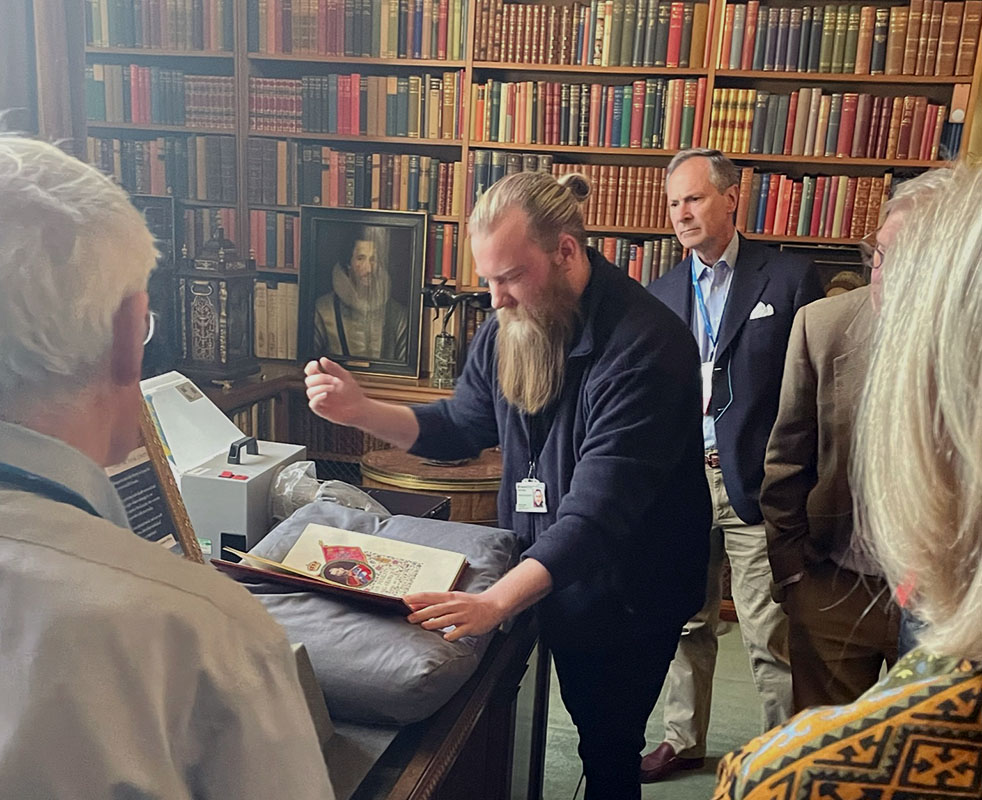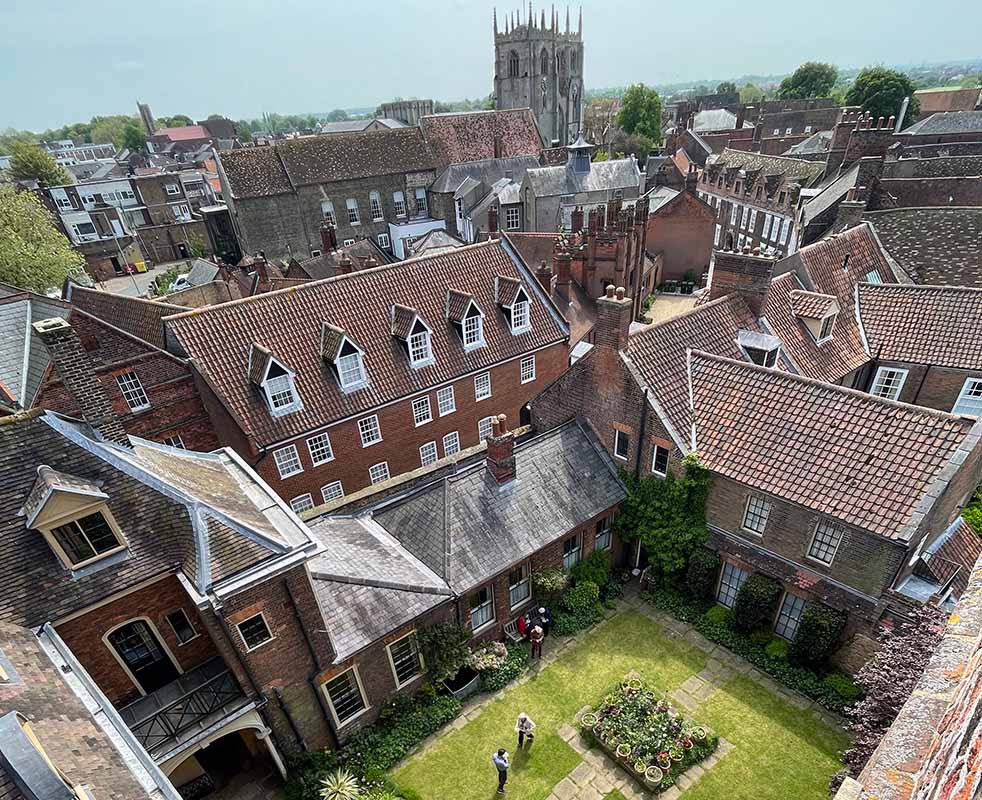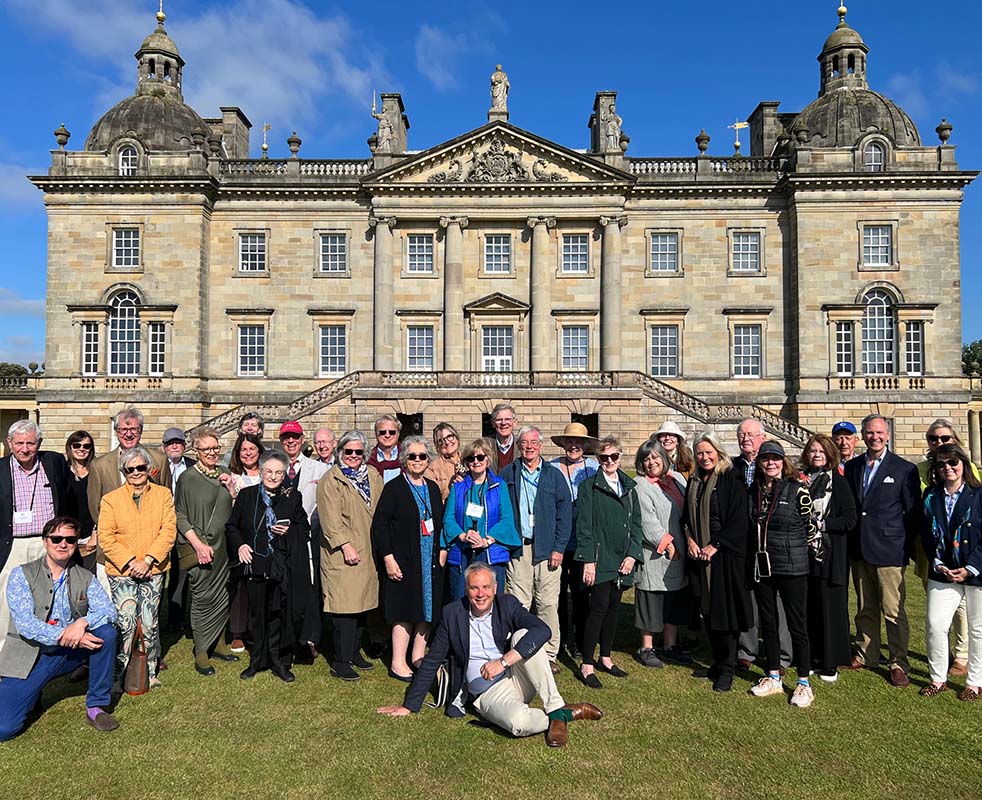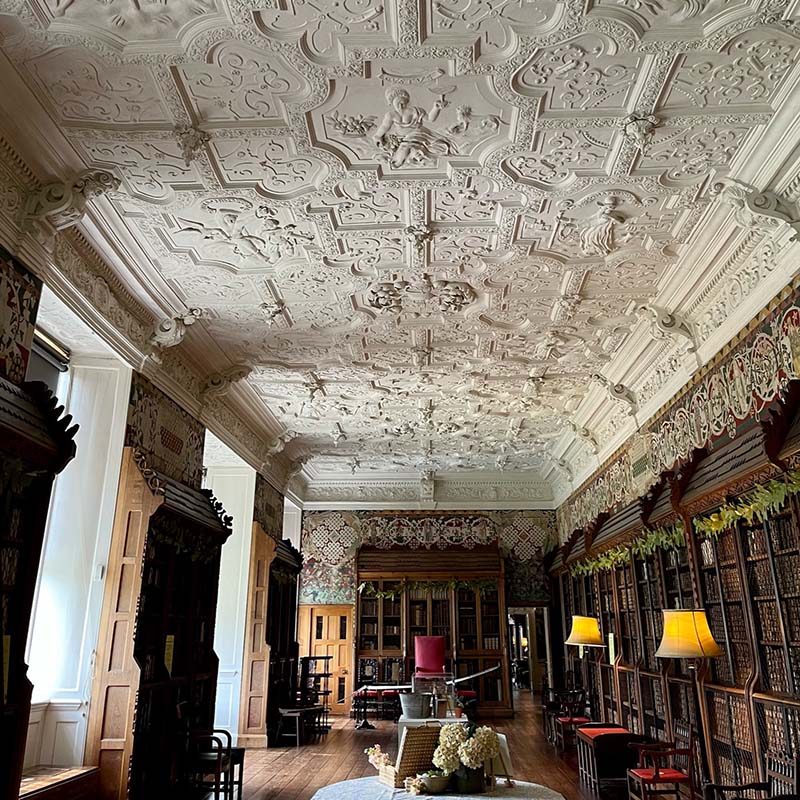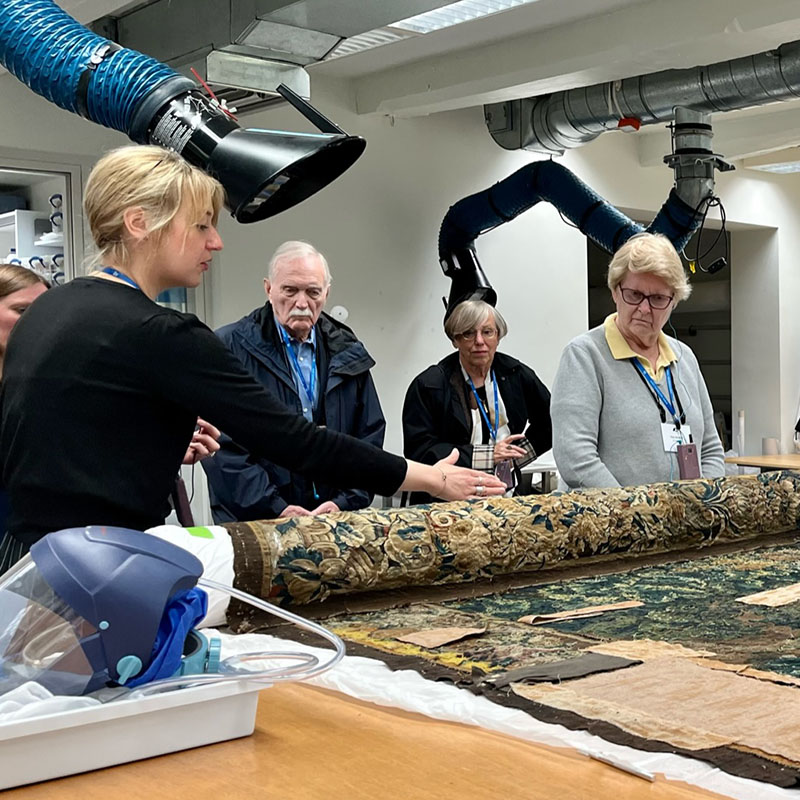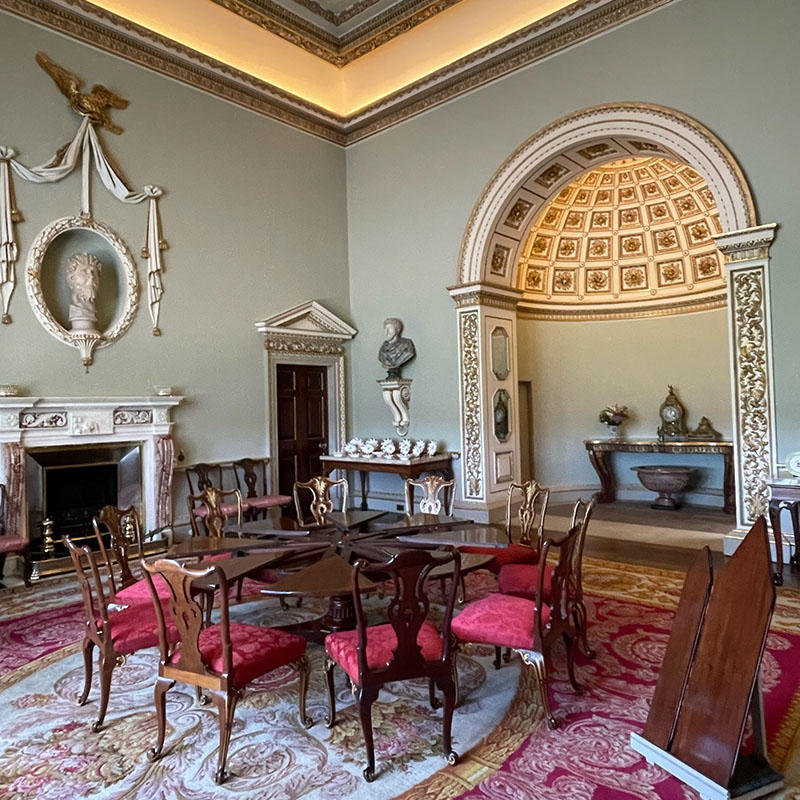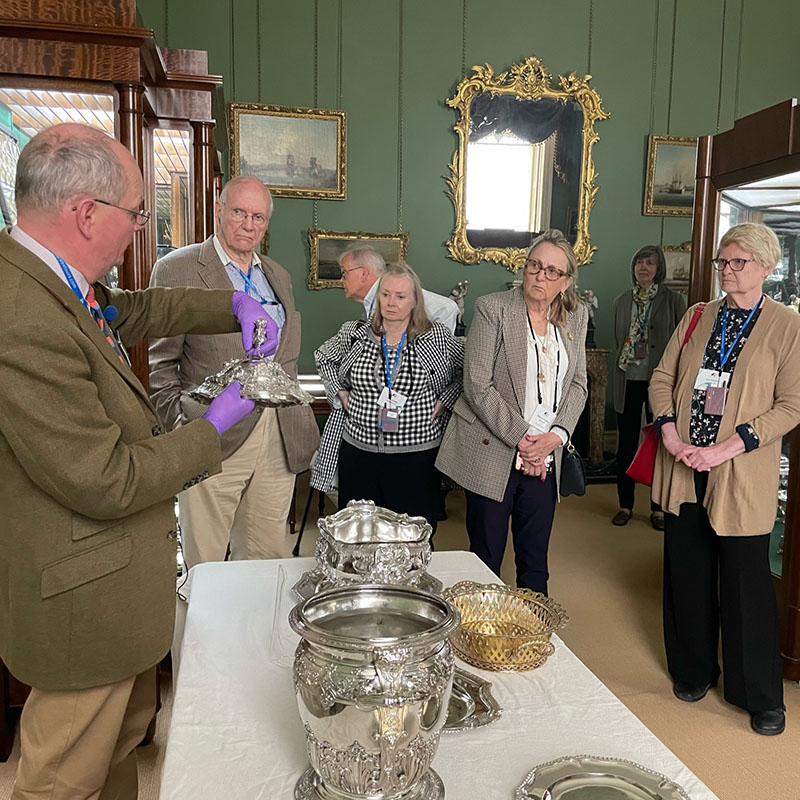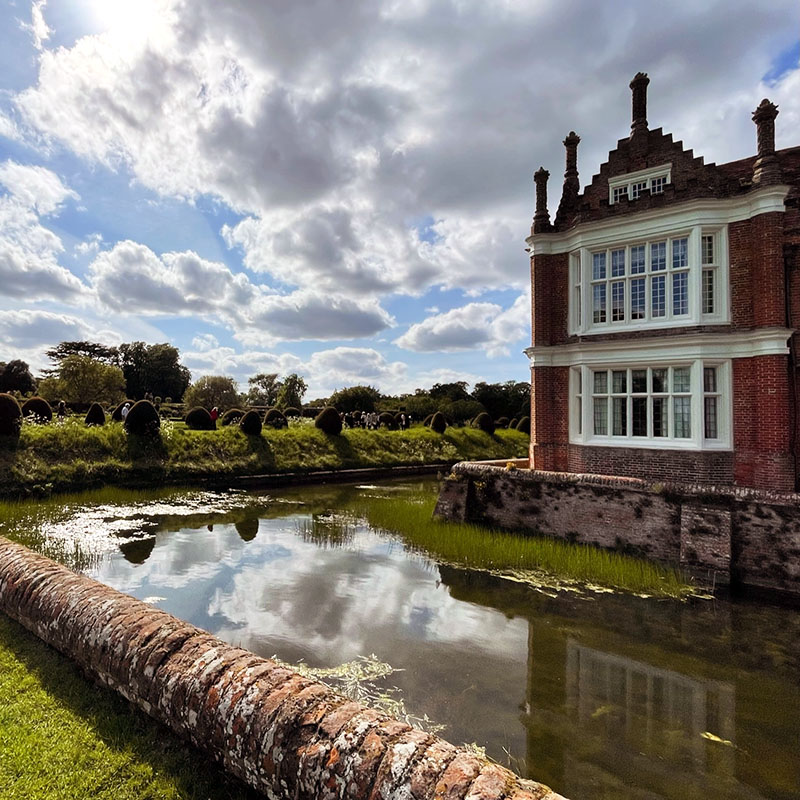Study Trip Abroad to England Explores Architecture and Art of East Anglia
by Alexis Dempsey
Decorative Arts Trust members embarked on Study Trip Abroad tours to East Anglia in May and June, which consisted of luxurious country houses and bountiful gardens in Norfolk and Suffolk. Brock Jobe, Winterthur Professor Emeritus and Decorative Arts Trust Board President, shared his invaluable knowledge of furniture and decorative arts with both tours. These adventures were nothing short of incredible!
For guests who arrived early in Cambridge, we offered special tours focused on this splendid university town. A walking tour oriented us to the growth of the city from its Medieval beginnings. Among the many important buildings in Cambridge is the King’s College Chapel, which was founded by Henry VI in the mid-1400s and features an incredible vaulted ceiling. The Fitzwilliam Museum contains a heralded collection of decorative and fine arts.
The trip officially kicked off with a welcome lecture by architectural historian and author Jeremy Musson which introduced us to the long history of East Anglia. We then traveled to Audley End, an impressive Jacobean edifice built in the 1600s for Thomas Howard, Lord Treasurer and 1st Earl of Suffolk. Curator of Collections and Interiors Dr. Peter Moore introduced the successive layers of furnishing and renovation, including interiors by Robert Adam, a Gothic Revival chapel from the 1770s, and later Jacobean Revival rooms.
An excursion to Anglesey Abbey, once a Medieval priory and then an Elizabethan manor house, introduced the long and complex history of the property as well as the wide expanse of decorative arts contained within, focusing on Lord Fairhaven’s rich collection of paintings, furniture, tapestries, clocks, and Chinese and European ceramics.
At Wimpole Hall, we enjoyed a tour of the Home Farm with Iain Stewart, Senior Collections and House Manager. Heading inside the house, a tour led by Dr. Jane Eade, Cultural Heritage Curator, and Iain Stewart taught members about the evolution of the property involving an impressive pedigree of architects, including Flitcroft, Soane, Kedall, and Gibbes. Highlights included an opportunity to see the James Gibbs Baroque Chapel and the charming and highly decorative library currently undergoing conservation.
Departing Cambridgeshire, we headed to King’s Lynn in Norfolk to explore the wonderfully eclectic Clifton House by kind arrangement with Dr. Simon Thurley, the former CEO of English Heritage. This remarkable dwelling reflects nine centuries of occupancy and evolution, with a Medieval undercroft and Elizabethan tower as signature features. Dr. Thurley provided a tour of his family’s home—including an optional climb to the top of the five-story tower for a bird’s eye view of the River Ouse—followed by a lovely luncheon.
Houghton Hall was a highlight of the program. Built in the early 18th century, it is one of the finest examples of Palladian architecture in England and introduced the creative genius of William Kent. Members marveled at the stunning floor-to-ceiling decorative schemes, including hard and soft furnishings, still representative of Kent’s 18th-century designs. The overlay of a Sean Scully installation on the grounds and within the house offered a thought-provoking contrast.
Near Aylsham, we were greeted by the owners of Wolterton Hall, Peter Sheppard and Keith Day, for a champagne toast and dinner. Like Houghton, this 18th-century Palladian country house was built for a member of the Walpole family. The interiors combine furniture, textiles, and paintings from their personal collections as well as portraits, books, and decorative arts with Walpole provenance.
The breathtaking Jacobean facade at Blickling Hall drew us inside for a tour of the ill-fated Anne Boleyn’s childhood home. The long gallery was converted into a spectacular library, layering Arts and Crafts bookcases and decoration beneath a stunning plaster ceiling. The National Trust’s Textile Conservation Center sits on the grounds of the Blickling estate, where the talented staff presented a range of objects from its internationally important textiles collection under treatment, including the Gideon tapestries from Hardwick Hall.
At the privately owned Raynham Hall, sitting on a 7,000-acre estate, the group enjoyed lunch before embarking on a tour of the house, arranged very kindly by Lord and Lady Townshend. Here we were able to experience the first country house built in Norfolk under the first wave of Palladian fervor introduced in the early 17th century by Inigo Jones.
While visiting Felbrigg Hall, Louise Green, Collections and House Manager, focused our attention on one of the most complete displays of Grand Tour paintings in England. David Adshead, Secretary of the Georgian Group and former Architectural Historian for the National Trust, contributed an excellent study session of architectural drawings tied to the house’s construction and subsequent renovations. After lunch, we embarked on a tour of St. Andrew’s Church, the only extant ecclesiastical building designed entirely by Robert Adam. We also enjoyed touring the nearby Gunton Sawmill, where kind volunteers demonstrated the still functioning 18th-century equipment.
The estate surrounding Sheringham Hall is under the care of the National Trust, but the house and the formal gardens are in the hands of Paul Doyle and Gergely Battha-Pajor, who provided an excellent introduction and tour of their loving and careful restoration.
Before turning our sights southward to Suffolk, we availed ourselves of an extensive exploration of the sublime Holkham Hall, which included an in-depth study of the collection with Katherine Hardwick, Curator. Massive in scale and magnificent in its finishes, our private tour included many of the principal rooms followed by a walk to the stunning walled gardens, where the head gardener shared with us current strategies for growing florals, fruits, and vegetables in a changing climate.
While in residence in Suffolk, we resided at The Swan in the charming Medieval town of Lavenham, which consists of an assemblage of historic timber-frame structures.
Gainsborough’s House, located in nearby Sudbury, introduced members to the birthplace of English painter Thomas Gainsborough and contained a splendid collection of his work. We also enjoyed a tutorial on the town’s long history in the silk trade via a presentation and tour of Humphries Weaving, a firm that produces an impressive range of reproduction fabrics for historic houses in the UK and stateside.
The singular late-18th-century Ickworth House near Bury St. Edmonds beckoned us for lunch. Completed in fits and starts by Hervey family members, the house contains a superb collection and fascinating interiors. We benefited from a special silver study session led by James Rothwell, Senior Curator and Silver Adviser at the National Trust.
The last day of the trip began with a walking tour of Lavenham with Christopher Newall, who introduced the signature Tudor buildings that draw visitors to this charming town. We left midday for lunch and a tour at Otley Hall, with 12th-century origins and a later playhouse addition that was used to be a rehearsal location for various Globe Theatre productions.
An unforgettable visit to Helmingham Hall capped off this magnificent expedition to East Anglia. The house and gardens are sublime, and the drawbridge that provides access to the moated house has been lifted each night since 1510. We could not have asked for a more splendid setting for our closing dinner.
Learn more about upcoming Study Trips Abroad on our Calendar of Events webpage. To stay up-to-date on registration announcements, sign up for our email list and follow us on Facebook and Instagram.
Alexis Dempsey is the summer 2023 Communications Intern at the Decorative Arts Trust.
About The Decorative Arts Trust Bulletin
Formerly known as the "blog,” the Bulletin features new research and scholarship, travelogues, book reviews, and museum and gallery exhibitions. The Bulletin complements The Magazine of the Decorative Arts Trust, our biannual members publication.
Click Images to Enlarge
Did you know that clicking on the images in Bulletin posts will allow you to get a closer look? Simply click on an image, and a larger version will open in a pop-up window.








